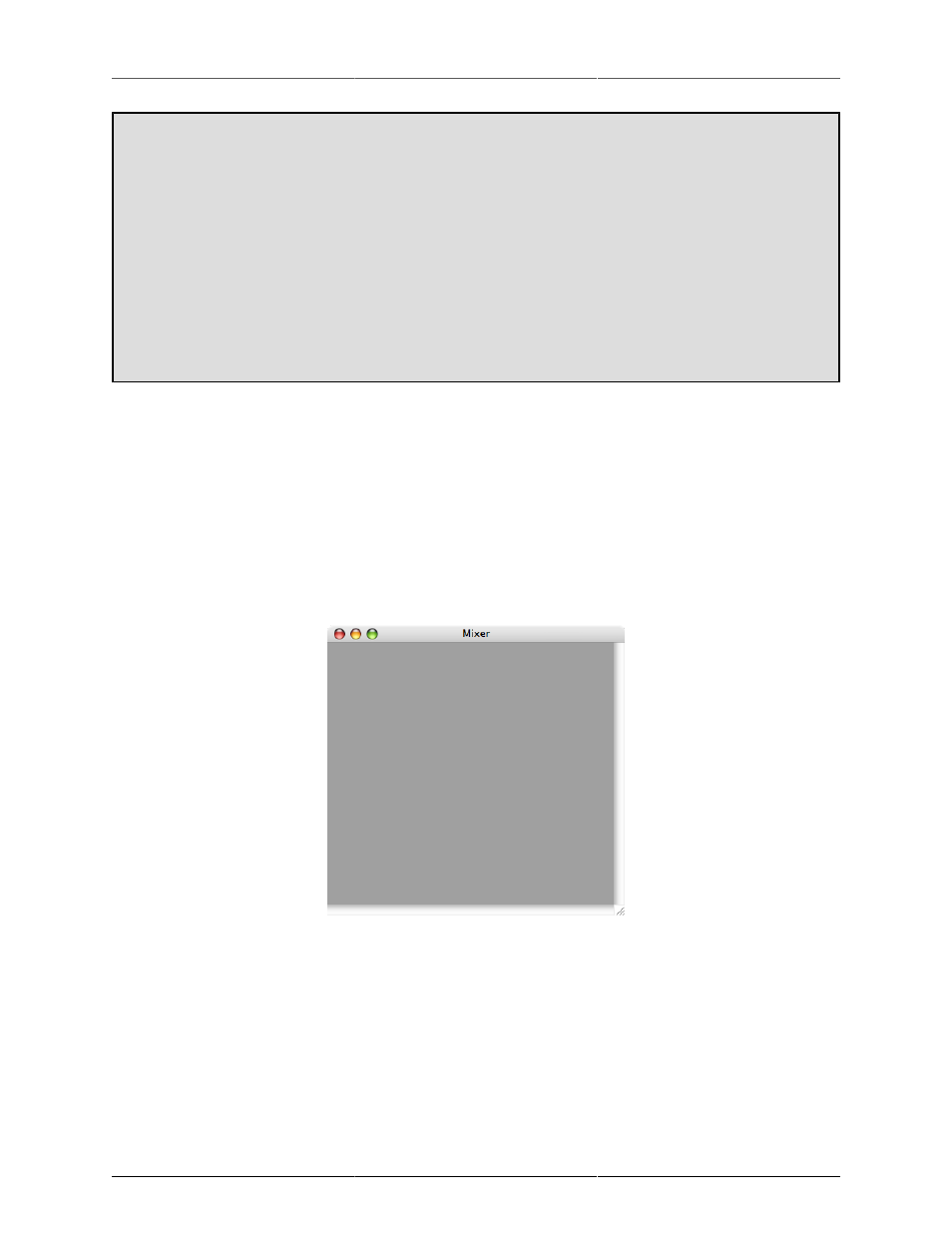Configuration, Using templates for configuration, 167 using templates for configuration – Metric Halo Mobile I/O User Manual
Page 167: Blank mixer window

MIO Console Overview
167
What does the Übergraph do for me?
While the v.5 mixer is based upon the Übergraph, it does not allow you to interact directly with it.
Rather, the v.5 mixer manages all of the plug-ins and connections within the Übergraph for you. Even
though you may be creating an incredibly complex network of plug-ins with many mults and bus to bus
routes, the user interaction required for you to control the system is simple and direct. This explanation
of the Übergraph is included to give you a deep understanding of the v.5 architecture, nothing more.
The v.5 mixer works as complex routing manager, adding plug-ins (including mixer plug-ins) to the
Übergraph based upon your configuration commands. Because the +DSP engine automatically config-
ures the runtime environment to compensate for routing latency in the configured DSP graph, you can
rely on the fact that bus to bus routes all arrive with no routing latency. This allows you to configure
sub-mixes and stems, including sub-bus processing, without having to worry about phase-cancellation
problems or other latency related issues.
The v.5 mixer builds a model of your desired mix bus structure and also tracks all of the routes that you create
between busses, bus outputs and direct outs. The mixer then ensures that everything stays routed properly as
you add and remove plug-ins, channels and busses. This technology makes the manipulation of your mixer
and routing simple — rather than think about how to route the elements of the mixer, you simply insert things
where you want them and the mixer takes care of all the routing for you. Since the model is based upon the
+DSP graph, you have much more flexibility in your routing options with regards to arbitrary sends, I/O, direct
outs, and mults than you have in most digital mixers.
Configuration
As described above, the v.5 mixer starts with a clean slate — nothing connected:
Figure 11.34: Blank Mixer Window
In order to use the Mobile I/O with v.5, you must have a mixer configured. This means that you need to load
one of the supplied mixer templates (using the “Open Template...” command), a saved MIO Console Settings
file (if you have one), or you can create a new mixer configuration.
Using Templates for Configuration
The easiest way to create a new mixer configuration is to start with a template using the File » Open Tem-
plate… menu command. When you select this command, you are presented with the “Choose Configuration
Template...” window: